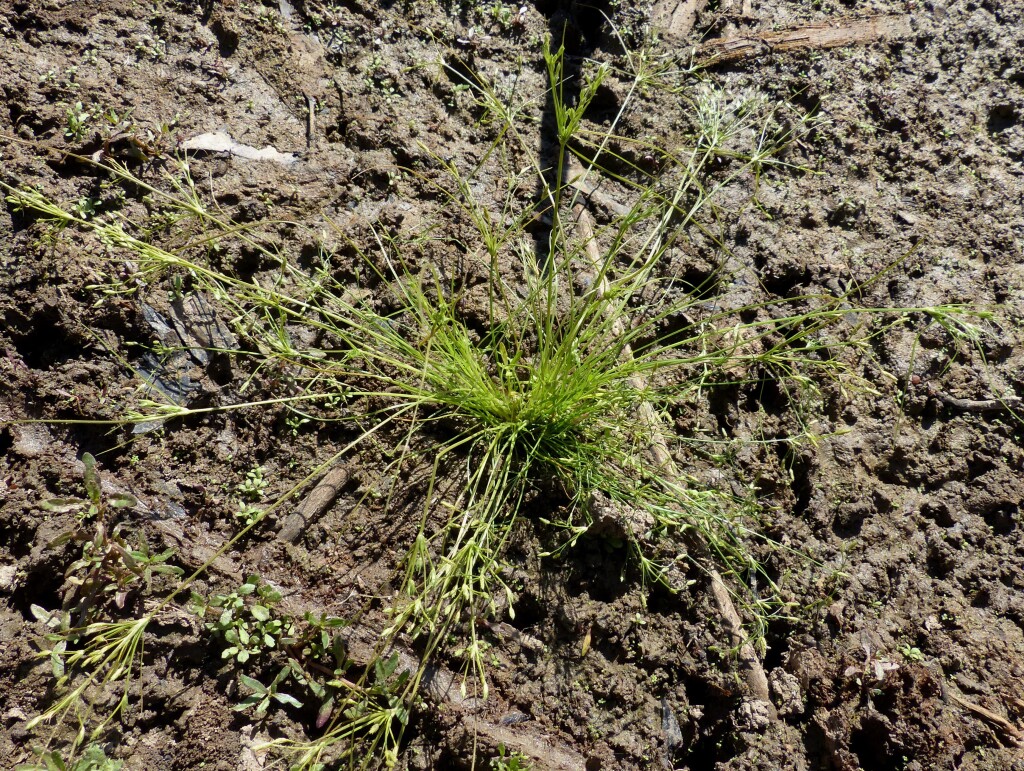Fimbristylis aestivalis
(Retz.) Vahl Summer Fringe-rushSmall, densely tufted annual. Culms compressed, angular, 3–20 cm high, 0.3–0.5 mm diam. Leaves shorter than culms, minutely hispid, 0.3–0.5 mm wide; ligule absent. Inflorescence simple to compound, with several to many solitary spikelets, on branches to 5 cm long; involucral bracts leaf-like, 1–4 slightly exceeding inflorescence. Spikelets ovoid, angular, acute, 3–7 mm long, 1–1.5 mm diam.; glumes thinly membranous, ± acute, shortly mucronate, with obscurely 3-nerved acute keel, and pubescent or glabrous nerveless sides, minutely hispid near keel, straw-coloured to pale red-brown, 1.2–1.5 mm long; stamen 1; anther 0.3–0.5 mm long; style 2-fid, sparsely ciliate above, glabrous or with a few short cilia at base. Nut biconvex, with acute angles, broad-ellipsoid, shortly stipitate, smooth, shining, obscurely reticulate by the iso-diametric epidermal cells, pale yellow, 0.5–0.7 mm long, 0.4–0.5 mm diam. Flowers spring–summer.
MuM, VRiv, RobP, MuF, CVU, NIS. All mainland States. Asia, Malesia. In damp, usually sandy places beside watercourses and on floodplains chiefly of the Ovens, King and Murray Rivers, with a disjunct occurrence at Lake Glenmaggie near Heyfield.
Wilson, K.L. (1994). Cyperaceae. In: Walsh, N.G.; Entwisle, T.J., Flora of Victoria Vol. 2, Ferns and Allied Plants, Conifers and Monocotyledons, pp. 238–356. Inkata Press, Melbourne.
 Spinning
Spinning


